INDIAN OCEAN TRAVEL by TOURISMER
INDIAN OCEAN TRAVEL by TOURISMER

Responsible Tourism Madagascar
The fourth largest island in the world, its flora and fauna are so unique and diverse that it is nicknamed "the eighth continent".
Known as the Big Red Island, Madagascar is a world apart, ideal for lovers of wild life, and has many other things to offer.
Incredibles deserted beaches, sites of world class diving, opportunities to practice all kinds of other nautical sportsand delicious food
Many treks through amazing landscapes, without forgetting thewarm-hearted welcome that the Malagasy people, always smiling, will reserve for you.


One of the keys to responsible tourism in Madagascar is to ensure that as much of the money you spend on your vacation as possible stays there.
Travelers can contribute by buying handicrafts and possibly doing donations to local charities. Consider buying ethical souvenirs.
Madagascar does not have mechanized recycling plants. Instead, the poorest of the poor scavenge dumps for clothes, containers, etc.
In rural areas, rubbish is simply dumped on the beach or on vacant lots and burned.
If possible, bring your non-biodegradable waste home, or at least to town. Batteries, in particular, should be taken home and disposed of properly.
Plastic bottles are an exception: rural populations in Madagascar need all possible containers to transport or store water or other liquids; so you can give your empty water bottles to the villagers.
Along with recently introduced laws in many other countries, Madagascar banned lightweight plastic bags in 2015.
Archaeological discoveries make it possible to envisage the first presence of the human species in Madagascar at least 10,000 years ago.
The origin of the current Malagasy population is diverse and discussed. The Malagasy are sometimes considered to be mainly of Austronesian ancestry (like their languages) sometimes, given the proximity of Africa (400 km coasts of Madagascar), as mostly Africans.
At the beginning of human settlement, called the "paleo-Malagasy period", the Ntaolo seem to have divided into two large groups according to their choices of subsistence: the Vazimbas who settled in the forests of the interior, and the Vézos who remained on the west coast.
From the middle of the first millennium until around 1600, the island welcomed immigrants from the Middle East (Shirazi Persians, Omanite Arabs, Arabized Jews), Africans (Bantus) and Orientals (Gujarati Indians, Malays, Javanese, Bugis and Orang Laut ), even Europeans (Portuguese), who integrated and acculturated themselves to Vezo and Vazimba society, often by matrimonial alliance.
The cultural, political and technological contributions will be at the origin of the great upheavals of the XVIe century that will lead to the Malagasy feudal era.
Inland, the struggles for hegemony of the various neo-Vazimba clans of the central highlands resulted in the birth of the Merina, Betsileo, Bezanozano, Sihanaka, Tsimihety and Bara kingdoms and/or ethnic groups.
On the coasts, the integration of new Eastern, Middle Eastern and African immigrants gave birth to neo-Vezo kingdoms and/or ethnic groups: Antakarana, Boina, Menabe (later united in Sakalaves) and Vézos (west coast), Mahafaly and Antandroy (South), Antesaka, Antambahoaka, Antemoro, Antaifasy, Antanala, Betsimisaraka (East coast).
The birth of these great "post-Vazimba"/"post-Vezo" kingdoms essentially changed the political structure of the old world of the neo-Vazimba and neo-Vezo clans, but the vast majority of the old categories remained intact within these new kingdoms: the common language, the customs, the traditions, the sacred, the economy, the art of the ancients remained preserved in their great majority, with variations of form according to the regions.
Today, the population of Madagascar can be considered as the product of a mixing between the first occupants vahoaka ntaolo austronesians (Vazimba also Vezo) and, those arriving later (Hova neo-Austronesians, Persians, Arabs, Africans and Europeans).
The end of XIXe century, with the partition of Africa between the European colonial empires at the Berlin conference (1884-1885), sounded the death knell for the expansion and independence of the Kingdom of Madagascar.
The resistance is massive, the Malagasy army manages to repel the first waves of invasion in 1883, but the decisive battles will follow. the Madagascar campaign ended in 1895.
The conquest was followed by ten years of latent civil war, due to the Menalamba insurrection. The "pacification" led by the French administration lasted more than fifteen years, in response to the rural guerrillas dispersed in the country. In total, the repression of this resistance to colonial conquest caused between 100,000 and 700,000 Malagasy victims, according to sources.
Madagascar will be under French administration from in the .
The island became independent on but the First Malagasy Republic remains very closely linked to France by cooperation agreements. President Tsiranana, criticized by the population for his support for French interests, faced growing protest, in particular the student strike led from the capital to the provinces, and left power in 1972.
The second Malagasy republic is related to a communist state, even if private property is not abolished there, and religion is not persecuted there; Ten years later, towards the end of the 1980s, we speak of " failure of the socialist experience” because Didier Ratsiraka's regime failed to improve living conditions and opposition grew.
After a brief transitional period, a new constitution was adopted by referendum, and Albert Zafy was elected president in 1993.
From 1997 Madagascar experienced a period of economic stability until 2001 with 4.3% average annual growth.
2002-2009: presidency Marc Ravalomanana
The elections of elected for 5 years Andry Rajoelina.
The Indonesian origin of the Malagasy people is strongly reflected in their language, which is spoken, with regional variations of dialects, throughout the island. Malagasy is a remarkably rich language, full of images, metaphors and proverbs.
About 41% of Madagascans are Christians, divided almost equally between Protestants and Catholics. There are also about 20,000 Orthodox Christians.
The first evangelization of the island was due to Welsh Protestant missionaries in 1820 (date of arrival of missionaries David Jones and Thomas Bevan sent by the London Missionary Society) largely concentrated in the north-western provinces of Mahajanga and Antsiranana (Diego Suárez). They first set about translating the Bible into the Malagasy language and publishing it, co-creating for the occasion a Latin alphabet for the language, with King Radama Ist. They will then be supported by many others from the same mission.
More than 52% of the country's population still practices the traditional religion which emphasizes the connections between the living and the dead. The beyond is not perceived as an inaccessible kingdom, it participates in the world of the living.
Muslims represent 15% of the population.
There are some minorities of Hinduism, Judaism, and Bahaism.
Music and dance
Malagasy people are known for their creativity and music is one area where this is perhaps most blatant. Although geographically distant from international circuits, Madagascar is beginning to benefit from an international audience for the quality of its music and its musicians, both traditional and modern.
Historiquement, la musique traditionnelle malgache a bénéficié d’une publicité internationale par le biais des grands ambassadeurs du passé, de nombreux ambassadeurs de la musique traditionnelle malgache, musiciens et leaders internationalement reconnus résident à l’étranger. Ils contribuent au renouvellement et au rayonnement des formes rythmiques et mélodiques traditionnelles à travers le monde.
Afindrafindrao is a traditional Malagasy dance whose melody is used as the background for the official opening dance of festivals and various ceremonies: weddings, circumcision celebrations, turning of the dead. The Afindrafindrao is a quadrille that is always danced in pairs, with the woman in front and the man behind.
Antosy is a dance that comes from the northwest of Madagascar. It is intended for young people during the various traditional ceremonies. You have to perform various dance figures around your partner.
Malesa is a traditional Malagasy dance which was created by the famous accordionist from Bealanana Tilahifotsy.
Bahoejy is a traditional Malagasy dance. She is from Antsohihy. It is a dance that has some similarities with the malesa.
Salegy is a traditional Malagasy dance practiced throughout the island. Among the Tsimihety, the salegy is considered an opening dance during any event.
Alalaosy is very popular during ceremonies or traditional festivals. The gestures reflect the mimed works: harvesting, transplanting, cultivation of rice with sowing, etc. Background music accompanies the gestures throughout the dance.
Basesa is a traditional Malagasy dance originating in the Atsinanana and Analanjirofo region. This is a dance practiced by the Betsimisaraka royal family.
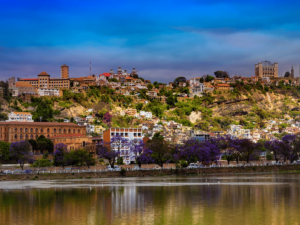 Bienvenue à Tanà, la pétillante capitale de Madagascar! Cette ville vous révèlera une histoire riche et passionnante. En déambulant dans les rues sinueuses de la Haute-Ville, vous pourrez admirer des maisons typiquement malgaches en briques rouges, certaines remontant au temps du Royaume Merina au 19ème siècle! Ne manquez pas de faire un tour au majestueux Palais de la Reine, ou Rova, perché sur une colline et qui domine fièrement la ville. Il vous rappellera le temps des rois et des reines qui ont façonné l’histoire de ce pays. Bien que partiellement restauré après l’incendie de 1995, ses vastes terrains offrent une vue panoramique imprenable sur la ville.
Bienvenue à Tanà, la pétillante capitale de Madagascar! Cette ville vous révèlera une histoire riche et passionnante. En déambulant dans les rues sinueuses de la Haute-Ville, vous pourrez admirer des maisons typiquement malgaches en briques rouges, certaines remontant au temps du Royaume Merina au 19ème siècle! Ne manquez pas de faire un tour au majestueux Palais de la Reine, ou Rova, perché sur une colline et qui domine fièrement la ville. Il vous rappellera le temps des rois et des reines qui ont façonné l’histoire de ce pays. Bien que partiellement restauré après l’incendie de 1995, ses vastes terrains offrent une vue panoramique imprenable sur la ville.
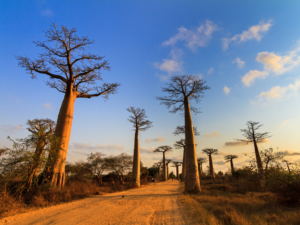 One of the most famous views of Madagascar. A group of baobabs that line the dirt road between Morondava and Belon'i Tsiribihina in the west of the island.
One of the most famous views of Madagascar. A group of baobabs that line the dirt road between Morondava and Belon'i Tsiribihina in the west of the island.
The baobab, a monster among the trees with its massively swollen trunk and sparse bushy branches, is emblematic of Madagascar. It is the homeland of the baobabs. Of the nine species present in the world, six grow exclusively in Madagascar. It's hard to be certain because, unlike other trees, baobabs don't produce growth rings, but recent radiocarbon dating suggests the oldest could be 900 years old, with most significantly younger.
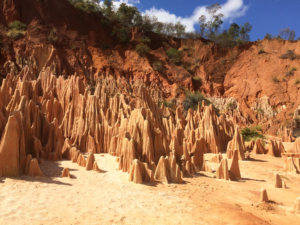 Une formation rocheuse de latérite rouge formée par l’érosion de la rivière Irodo au nord de Madagascar. Il est situé à environ 60 km au sud d’Antsiranana.
Une formation rocheuse de latérite rouge formée par l’érosion de la rivière Irodo au nord de Madagascar. Il est situé à environ 60 km au sud d’Antsiranana.
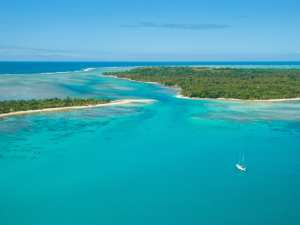 Une île tropicale envoûtante, avec des plages désertes bordées de cocotiers, des baies protégées par des récifs coralliens, des collines verdoyantes et une observation fantastique des baleines en saison. Bien que la région soit développée pour le tourisme, l’île a su conserver une ambiance traditionnelle. Les hôtels, de petite taille, offrent des bungalows rustiques pour une expérience authentique.
Une île tropicale envoûtante, avec des plages désertes bordées de cocotiers, des baies protégées par des récifs coralliens, des collines verdoyantes et une observation fantastique des baleines en saison. Bien que la région soit développée pour le tourisme, l’île a su conserver une ambiance traditionnelle. Les hôtels, de petite taille, offrent des bungalows rustiques pour une expérience authentique.
L’île, située à l’est de Soanierana-Ivongo, mesure 50 km de long et 7 km à son point le plus large. Pour les amateurs de charme, l’île aux Nattes est une alternative plus petite mais encore plus charmante, située à l’extrémité sud de l’île. La ville la plus importante est Ambodifotatra ; les autres petits villages sont principalement composés de huttes en bambou et en palmier.
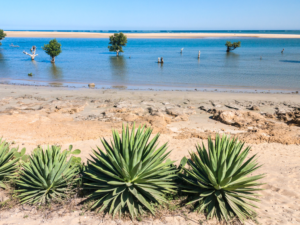 Ifaty is a small fishing village 24 km north of Toliara and Mangily is a separate village 4 km further. However, the first name has come to refer to the entire area, even though the second is the center of activity. Indeed, Mangily has become a very lively tourist resort.
Ifaty is a small fishing village 24 km north of Toliara and Mangily is a separate village 4 km further. However, the first name has come to refer to the entire area, even though the second is the center of activity. Indeed, Mangily has become a very lively tourist resort.
The région offre non seulement la mer, le soleil et le sable, mais aussi le snorkeling, la plongée sous-marine et la forêt d’épines.
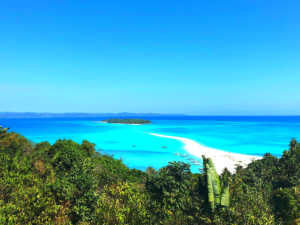 Découvrez Nosy Be, l’île parfumée de Madagascar.
Découvrez Nosy Be, l’île parfumée de Madagascar.
Le nom Nosy Be signifie « grande île » et se prononce « nossy bay » par les habitants Sakalava locaux, bien que « nooss bay » soit plus proche de la prononciation des hauts plateaux. L’île bénéficie d’un climat presque parfait pendant une grande partie de l’année, et son sol fertile et prospère est imprégné du parfum enivrant des fleurs d’ylang-ylang. C’est pour cette raison que les brochures touristiques la surnomment l’île parfumée. Nosy Be est l’endroit idéal pour se détendre et se ressourcer.
L’île offre de nombreuses activités, allant de la dégustation de fruits de mer aux baignades dans les plages, en passant par la plongée sous-marine et les excursions en bateau. De plus, Nosy Be dispose d’un plus grand nombre d’hôtels de luxe que le reste de Madagascar, pour un séjour des plus confortables.
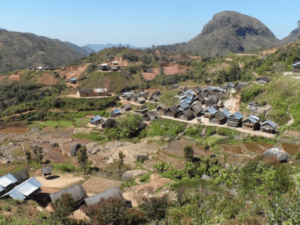 Une région fascinante pour sa culture et ses sculptures sur bois.
Une région fascinante pour sa culture et ses sculptures sur bois.
Cette région est un lieu de naissance des Zafimaniry, une tribu réputée pour ses sculptures sur bois. En plus de la création d’objets artisanaux, leurs maisons sont également décorées de manière unique. En 2003, l’UNESCO a déclaré que la culture de la sculpture sur bois des Zafimaniry était un chef-d’œuvre du patrimoine oral et immatériel de l’humanité.
On peut visiter la plupart des 17 villages de la région grâce à un programme d’écotourisme. Cependant, il est nécessaire de faire de la randonnée pendant plusieurs jours pour en voir plusieurs.
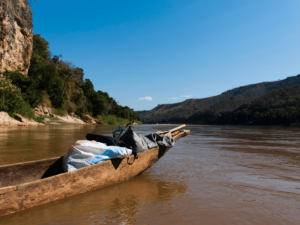 The descente du fleuve Tsiribihina, une expérience inoubliable pour les amoureux de la nature
The descente du fleuve Tsiribihina, une expérience inoubliable pour les amoureux de la nature
Si vous êtes passionné de la vie sauvage et de la flore, ou si vous cherchez simplement un moment de détente en pleine nature, la descente du fleuve Tsiribihina est faite pour vous. Cette aventure vous offre l’opportunité de découvrir une population rurale attachante et de vivre une expérience mémorable. Le départ se fait de Miandrivazo pour Belo-sur-Tsiribihina, ce qui représente environ 160 km de navigation lente sur le fleuve. Vous aurez l’occasion d’observer des oiseaux de toutes les couleurs, des lémuriens acrobates, des papillons, des caméléons, des canards à bosse, des sarcelles, des chauves-souris, des crocodiles et des orchidées. Vous traverserez également de nombreux villages Sakalava. Cette aventure peut être réalisée en pirogue ou en chaland, avec des bivouacs sur d’immenses bancs de sable. Préparez-vous à vivre des moments inoubliables !
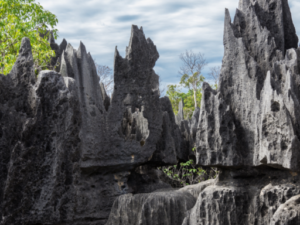 The Tsingy de Bemaraha Strict Nature Reserve in the Center-West region includes karst landscapes and limestone uplands cut into impressive "tsingy" type peaks and a "forest" of limestone needles, the dramatic canyon of the Manambolo river, rolling hills and high peaks. Untouched forests, lakes and mangroves are the habitat of rare and endangered lemurs and birds.
The Tsingy de Bemaraha Strict Nature Reserve in the Center-West region includes karst landscapes and limestone uplands cut into impressive "tsingy" type peaks and a "forest" of limestone needles, the dramatic canyon of the Manambolo river, rolling hills and high peaks. Untouched forests, lakes and mangroves are the habitat of rare and endangered lemurs and birds.
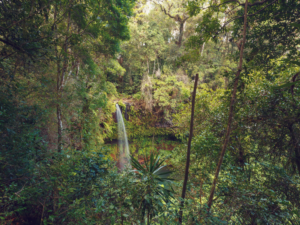 Located in the northern part of Madagascar, it was established in 1958 by the French colonial government. It is a splendid example of montane rainforest: the massif ranges from 850 to 1475 meters above sea level and has its own microclimate with rainfall similar to that of the eastern region. It is one of the friendliest protected areas in Madagascar, with wide trails, fascinating flora and fauna, a pleasant climate and easily accessible information. During the dry season, vehicles can go as far as the main picnic area, which provides a unique opportunity (in Madagascar) for the elderly or
Located in the northern part of Madagascar, it was established in 1958 by the French colonial government. It is a splendid example of montane rainforest: the massif ranges from 850 to 1475 meters above sea level and has its own microclimate with rainfall similar to that of the eastern region. It is one of the friendliest protected areas in Madagascar, with wide trails, fascinating flora and fauna, a pleasant climate and easily accessible information. During the dry season, vehicles can go as far as the main picnic area, which provides a unique opportunity (in Madagascar) for the elderly or
disabilities to see the rainforest and its inhabitants.
The park is home to an important tropical fauna, including seven species of Lemurs out of the 70 Malagasy (2 nocturnal and 5 diurnal), 75 species of birds and 59 of reptiles.
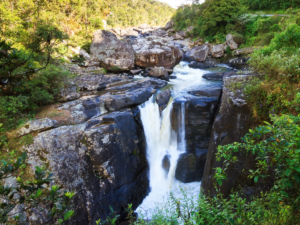 The name "Ranomafana" means "hot water" and it was the waters, not the lemurs, that attracted visitors in colonial times and funded the construction of the Ranomafana Spa Hotel.
The name "Ranomafana" means "hot water" and it was the waters, not the lemurs, that attracted visitors in colonial times and funded the construction of the Ranomafana Spa Hotel.
Particularly rich in fauna and flora, this hitherto unprotected fragment of mid-altitude tropical forest attracted worldwide attention with the discovery of the golden bamboo lemur in 1986; official protection followed in 1991.
There are 11 other species of lemurs, including the red-fronted brown lemur, the red-bellied lemur and the black-and-white frilled lemur, as well as the Milne-Edwards sifaka, two other types of bamboo lemurs and five nocturnal species. .
Also, in addition to reptiles, butterflies and other insects, there are more than a hundred species of birds, 36 of which are endemic.
Even without spotting the wildlife, there is enough variety in the vegetation and scenery, and enough fun to walk on the well-maintained trails, to make the visit worthwhile.
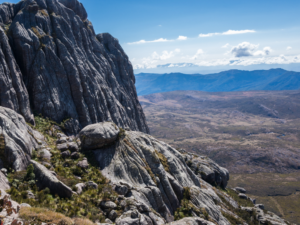 Madagascar's highest accessible peak is within the park.
Madagascar's highest accessible peak is within the park.
A few lodges and camps are nestled amongst these spectacular granite peaks and domes, perfect bases for treks in and around the marvelous Andringitra National Park. With highly variable altitudes, between 650 and 2,658 meters, it is one of the most biologically diverse sites in Madagascar. Access is very difficult during the rainy season and the park is closed from January to March.
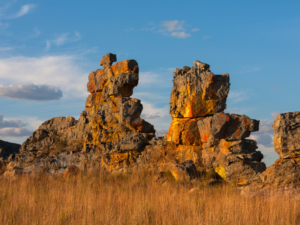 The combination of sandstone rocks cut by deep canyons and eroded into strange shapes, rare endemic plants and dry weather for most of the year make this the most popular national park in Madagascar.
The combination of sandstone rocks cut by deep canyons and eroded into strange shapes, rare endemic plants and dry weather for most of the year make this the most popular national park in Madagascar.
For botanists, there are the Pachypodium plants and the local endemic Aloe; and for lemur lovers, there are sifakas, brown lemurs, and ring-tailed lemurs.
Isalo is also sacred to the Bara tribe; for hundreds of years they have used the caves in the canyon walls as burial grounds.
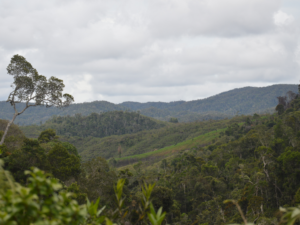 Since the late 1990s, the long-standing Analamazaotra Forest Reserve, sometimes known by its colonial name of Périnet, has been co-managed with Mantadia (20 km to the north) as Andasibe-Mantadia National Park. Due to its proximity to the capital and its exceptional wildlife, it is now one of the most popular reserves in Madagascar.
Since the late 1990s, the long-standing Analamazaotra Forest Reserve, sometimes known by its colonial name of Périnet, has been co-managed with Mantadia (20 km to the north) as Andasibe-Mantadia National Park. Due to its proximity to the capital and its exceptional wildlife, it is now one of the most popular reserves in Madagascar.
The moist montane forests are home to a wide variety of lemurs, birds, reptiles and invertebrates. The region also has several independently managed protected areas, including the Mitsinjo Forest.
Although the vast majority of visitors spend one or two nights here, it is entirely possible to visit Andasibe as an extended day trip from the capital, Antananarivo. You will need to leave before dawn to have a good chance of seeing and hearing the indri.
Standing around a meter tall, with a barely visible tail, black and white markings and a startled teddy bear face, the indri looks more like an extinct panda than a lemur. It is his voice that makes this lemur very special: while other lemurs growl or swear, the indri sings. It's an eerie, plaintive sound - a mix of whale and siren song - that carries up to 3km as troops call out to each other through the forest. They usually call at dawn, mid-morning, and sometimes shortly before dusk. In the middle of the day, they take a long nap in the canopy. There are 11 species of lemurs in all in Andasibe, but you won't see them all.
Besides lemurs, there are tenrecs, beautiful and varied insects, spiders and reptiles including chameleons and boas and birds.
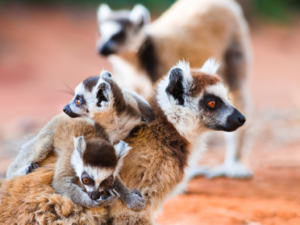 Berenty is especially famous for its lemurs; if you've ever seen them in a TV documentary, chances are they were filmed here. Brown lemurs, ring-tailed lemurs and sifakas are all guaranteed to be seen. There are around 500 ring-tailed lemurs in Berenty, and the population has remained remarkably stable considering that only a quarter of babies survive to adulthood. The young are born in September.
Berenty is especially famous for its lemurs; if you've ever seen them in a TV documentary, chances are they were filmed here. Brown lemurs, ring-tailed lemurs and sifakas are all guaranteed to be seen. There are around 500 ring-tailed lemurs in Berenty, and the population has remained remarkably stable considering that only a quarter of babies survive to adulthood. The young are born in September.
Attractive as they are, no ring-tailed animal can compete with Verreaux's sifaka when it comes to cuddling, with its creamy white fur, brown cap and black face. There are about 300 in the reserve. Unlike ring-tails, they rarely descend to the ground, but when they do, the length of their legs relative to their short arms necessitates a comical form of locomotion: jumping with both feet together like competitors in a race in bag. The red-fronted brown lemurs were introduced from the west and are now well established and almost as tame as the ring-tailed lemurs.
There are other lemurs which, being nocturnal, are more difficult to spot. The white-footed sportive lemur can be seen peering out of its tree hole during the day and gray mouse lemurs can be spotted in the beam of a flashlight on a nighttime walk.
Among other wildlife, fruit bats congregate in noisy groups in one part of the forest. Birdwatching is rewarding, with nearly a hundred species recorded. You have a good chance of spotting the hook-billed vanga, the crested coua, the giant coua, the coucal, the grey-headed lovebirds and the magnificent Malagasy paradise flytrap.
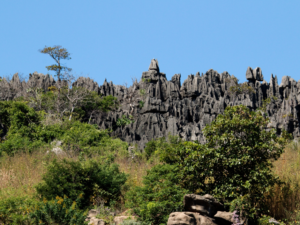 Literal trekking, where your gear is carried by porters to a different camp every night, is really only possible in a handful of places, like Isalo or Marojejy. There are also excellent hiking opportunities in Andringitra also Ankarana, but note that vous devez toujours être accompagné d’un guide dans les parcs nationaux.
Literal trekking, where your gear is carried by porters to a different camp every night, is really only possible in a handful of places, like Isalo or Marojejy. There are also excellent hiking opportunities in Andringitra also Ankarana, but note that vous devez toujours être accompagné d’un guide dans les parcs nationaux.
Most of Madagascar's "roads" are overgrown tracks, ideal for hiking. There are two well-known routes, the Smugglers Trail and the Trans-Masoala Trail, as well as a network of day and multi-day trails between theZafimaniry village..
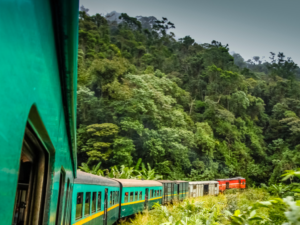 The 163 km route between Fianarantsoa and Manakara is popular with independent travellers. The train departs from Manakara on Tuesday/Saturday and runs all day, returning on Wednesday/Sunday. Long delays, breakdowns and cancellations are very common though, so don't try to squeeze this trip into a tight, inflexible itinerary.
The 163 km route between Fianarantsoa and Manakara is popular with independent travellers. The train departs from Manakara on Tuesday/Saturday and runs all day, returning on Wednesday/Sunday. Long delays, breakdowns and cancellations are very common though, so don't try to squeeze this trip into a tight, inflexible itinerary.
Tickets can be purchased in advance at Fianarantsoa station.
If you're traveling second class, board just before departure to secure a seat near the gate. It's nice and ventilated, it allows you to have a good view and avoid the smell of the toilet. The train stops frequently (there are 18 stations en route), allowing time to take photos and buy fruit and snacks from the vendors.
The line, which was built between 1926 and 1936, passes through 67 bridges, 48 tunnels (including one over a kilometer long) and crosses the Manakara airport runway. Many tracks were once part of a railway line in Alsace, but were seized from the Germans after World War I, and were eventually shipped to Madagascar by the French.
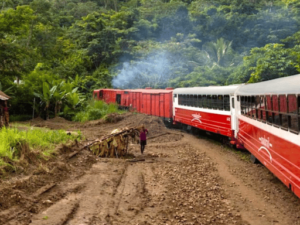 Built between 1901 and 1922, this railway saw heavy use during the colonial era, but trains ceased to run in the 1980s. For years the line lay disused, until it was privatized in 2002 and that a major track replacement program be undertaken to restore most of the line to working order.
Built between 1901 and 1922, this railway saw heavy use during the colonial era, but trains ceased to run in the 1980s. For years the line lay disused, until it was privatized in 2002 and that a major track replacement program be undertaken to restore most of the line to working order.
Abandoned for a long period, the use of this line was mainly used for goods traffic for a decade. On the 1st June 2023, passenger service was restored between Toamasina and Moramanga.
There is so much to see and do, but the island is vast and transport infrastructure is lacking. Let's put things into perspective. Madagascar is larger than all of Europe's 46 countries except one. Driving non-stop from dawn to dusk, it would take you seven days to get from one end of the island to the other, in a good vehicle, during the dry season!
Whether you're planning your trip independently or looking for ideas to create your bespoke itinerary, this could help you make the best use of the precious time you have in Madagascar:
To understand the challenges of designing a viable route, one must first understand the basic geography of the country's transport connections. Madagascar's road network is spider-like, with the capital (where international arrivals usually take place) at the centre, there are only main roads that branch off radially, like legs, to different points along the coast. It is therefore not possible to travel in a loop. Whichever direction you take from Antananarivo, the capital, you'll usually have to retrace your steps or catch a domestic flight back, unless you're prepared to spend several days off-roading.
The downside of fitting many domestic flights into your plan is not only that the costs add up quickly, but also that they can be unreliable; an itinerary that includes multiple flights is very likely to be disrupted by at least one last-minute cancellation or schedule change.
The other difficulty with flights is that they suffer from the same limitation as routes in that routes usually start or end in Antananarivo; you cannot fly between the south and north of Madagascar without a change in the capital (which usually requires an overnight stay). Accordingly, if your visit lasts less than 15 days, you will have to choose between the north and the south, or be prepared to spend a large part of your trip traveling.
Find more updated information on Tourism in Madagascar in our Blog Tourismer.io

In Madagascar, AVSF is recognized for its historic action in support of livestock farming and the establishment of local, high-quality animal health services. More than 250 community animal health auxiliaries have thus been trained and are still active in several regions, able to intervene with more than 30,000 families.
In 2018, following a process of harmonizing the establishment of local animal health workers and the strengthening of the animal health network, a certification reference system for local animal health workers, including activity reference documents, of skills and training of these Agents have been developed and validated. They will soon be recognized and applied throughout Madagascar.
AVSF also supports the development of small livestock (“gasy” chicken, local breed) which benefits from a very large local market.